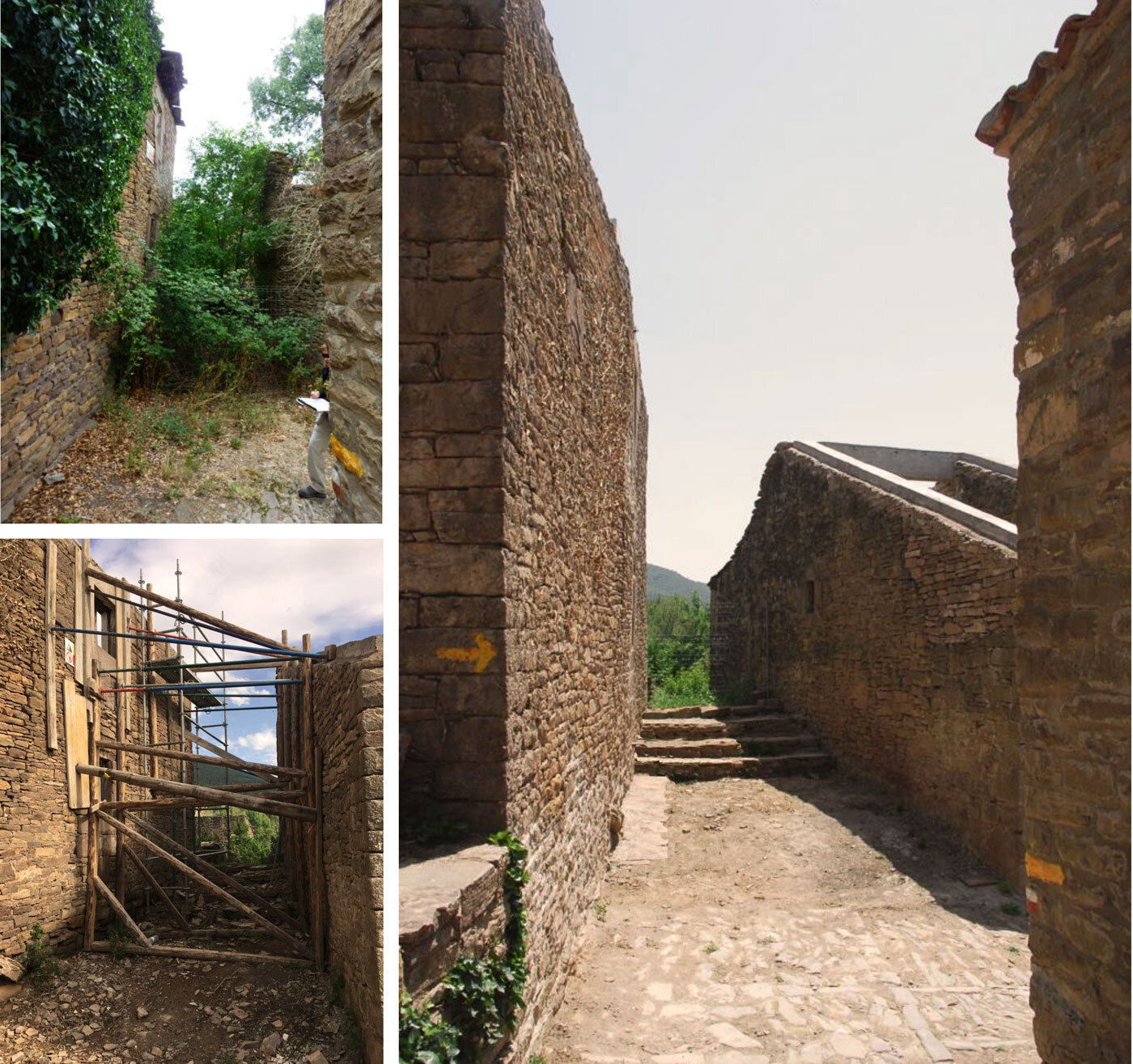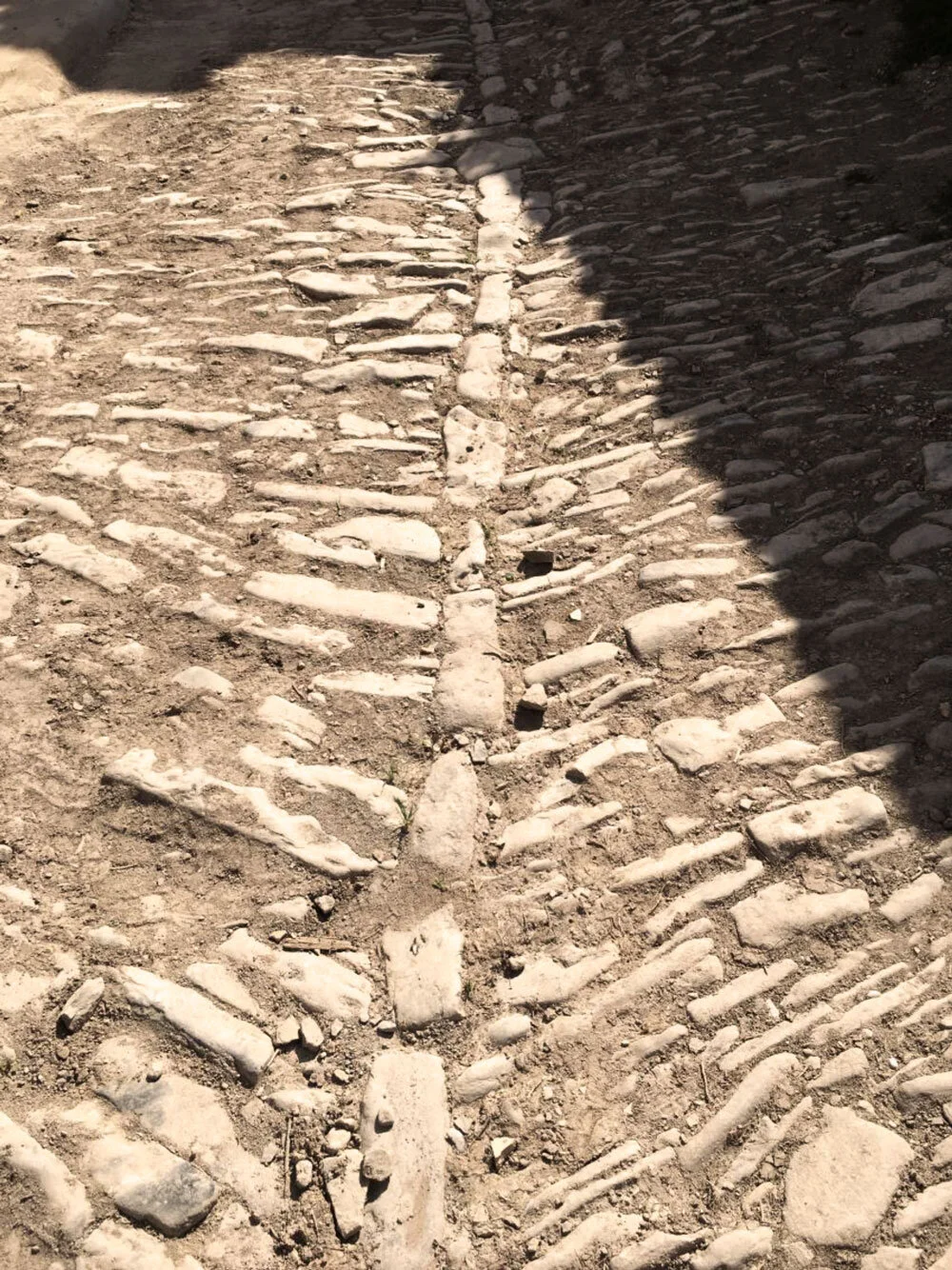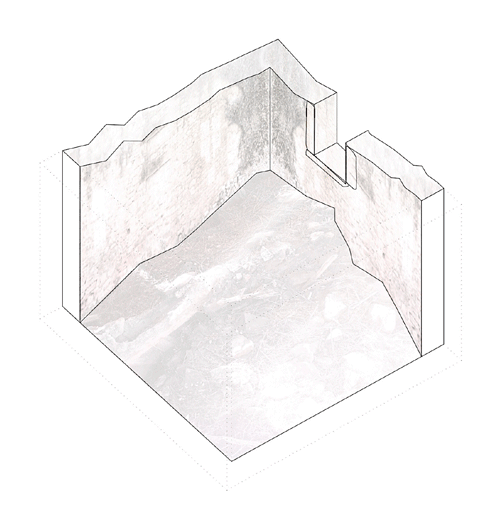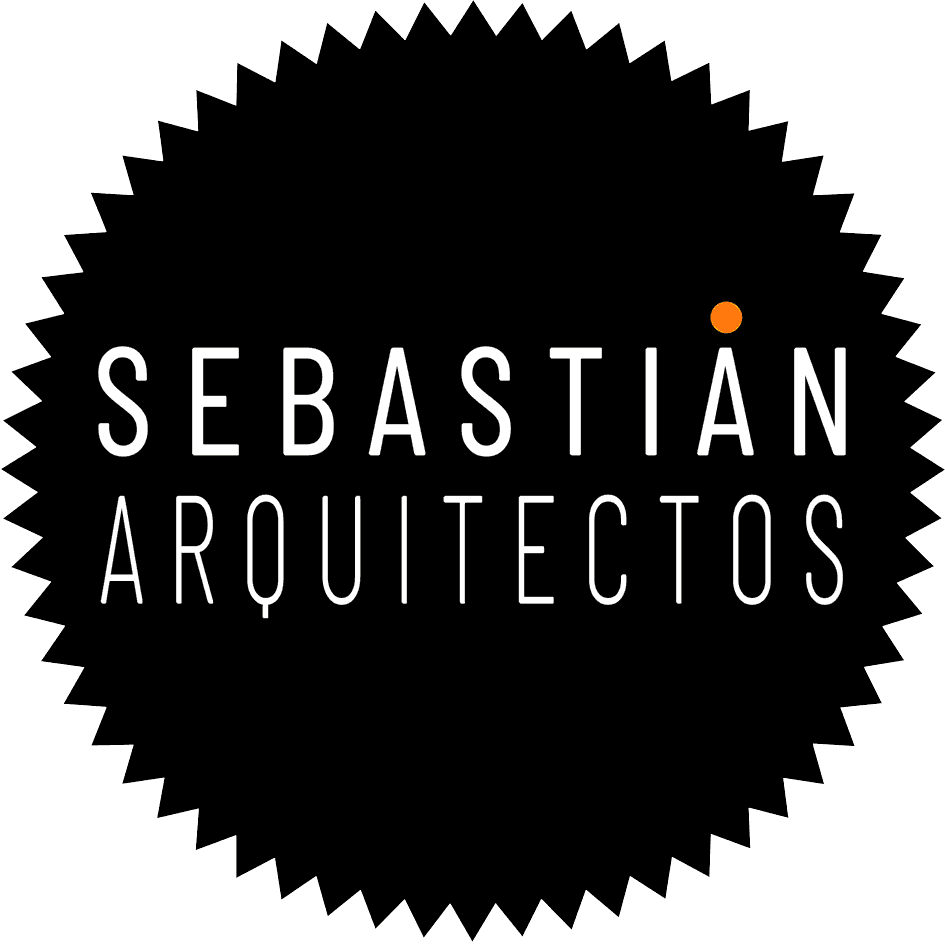



















Location: Ruesta .Zaragoza. Spain.
Area: 7500 sqm.
Year: 2018-2019
With: Pablo Sebastián, Alejandro Alda, Giorgio Bernardi, Valeria Gasparini
Promoter: Confederación Hidrográfica del Ebro
Builder: Damarim SL
Awards: Premio Edelweiss Turismo Sostenible 2022, Hispania Nostra 2021, García Mercadal 2020 (Heritage Intervention), Trofeo Ricardo Magdalena 2020, Selected Project XV Bienal de Arquitectura Española, Selected Project DOMUS Awards Restauro e Conservazione
Thanks to: CHE, Gobierno de Aragón, Ayuntamiento de Urriés, CGT. R.Betrán. C Varagnoli- C.Verazzo Univ Chiati Pescara. Matute & Manrique Estructuras.
Photos and drawings: © Sebastian Arquitectos, Giorgio Bernardi, Aeroyud -Miguel Sobaberas, Raquel Ornat, José Luis Cano

In the earliest 1960s the inhabitants of the municipalities of Ruesta, Esco and Tiermas had to abandon their houses, due to the construction of the Yesa reservoir. This special land, so close and so far in turn, suffered a sudden depopulation that would cause a decline not only social but also patrimonial. Curiously, Ruesta, an almost unknown village, has really an important heritage, not only compound by buildings and landscapes, ort the memories of the famous Spanish film “la Vaquilla”, shot in 1985 in its streets and in Sos del Rey Católico, but more important, its crossed by the French line of the Camino de Santiago, an example of cultural richness and interchange.

The Ebro Hydrographic Confederation, which has owned the town since the expropriation of the 1960s (with the exception of the castle), cedes its use and maintenance to the CGT union.
In 2017, accused of the serious risk of collapse of the houses that frame and border the Camino de Santiago, we were commissioned to project a MasterPlan for the recovery of Ruesta, as well as a subsequent project to carry out the works consolidation in first stage.

Today the works have already finished, and some of the houses in Centro St. are enabled as an unprecedented urban camping area next to the pilgrims' hostel. It is a use that arises derived from the Master Plan, which is foreseen as the most economical possible at present, which implies the structural consolidation, delays the death of houses and disappearance of urban fabric. A realistic alternative to abandonment phenomenon in the Emptied Spain

Union means strength. View of Centro St. from pilgrims hostel. The structural consolidation is designed with all the buildings working in common, as an organism. Concrete beams compound an upper ring that avoid lateral movements, protect the top of the stone walls, and as a memmorial draw a white line that defines, from the air, the design of the ancient village of Ruesta

Some of these buildings were close to collapse, so it was necessary to consolidate them avoiding risks, and avoiding the translation of Camino de Santiago ordering the village.
The main aim of this intervention, defined in the Master Plan as Urgent Actions , was to preserve the integrity of pilgrims, but also the weak but neccesary irrigation of live that day by day maintain Ruesta alive.

the House of Chocolatero is the first house a visitant can see in Ruesta. Its main window, yesterday a magnificient gallery that receive us, was just collapsing.
There is an important visual intention in this project, that tries to avoid the vision of remains and a dangerous landscape. In this way we tried to design other ways to reinforce, which recover the image of the ancient structure of the window, with its vertical elements, the horizontal railing, and the shadow of the terrace floor over the wall, that today protects the existent wood structure.

Riconoscibilità e reversibilità
The negative visual impact of Saint Andreas´crosses are replaced by wood elements that complete the lateral jambs and lintel, but producing a similar structural reinforce. Made by a different material, these wood pieces are recognized, similar but different to yellow stone, and of course maintain the clean image of the historical windows of the Camino de Santiago in Ruesta.

The actions that define our Master Plan for the ruins of buildings consist of simple actions: clean, consolide, reinforce, and drain the ruins, and finally allow simple uses into.
